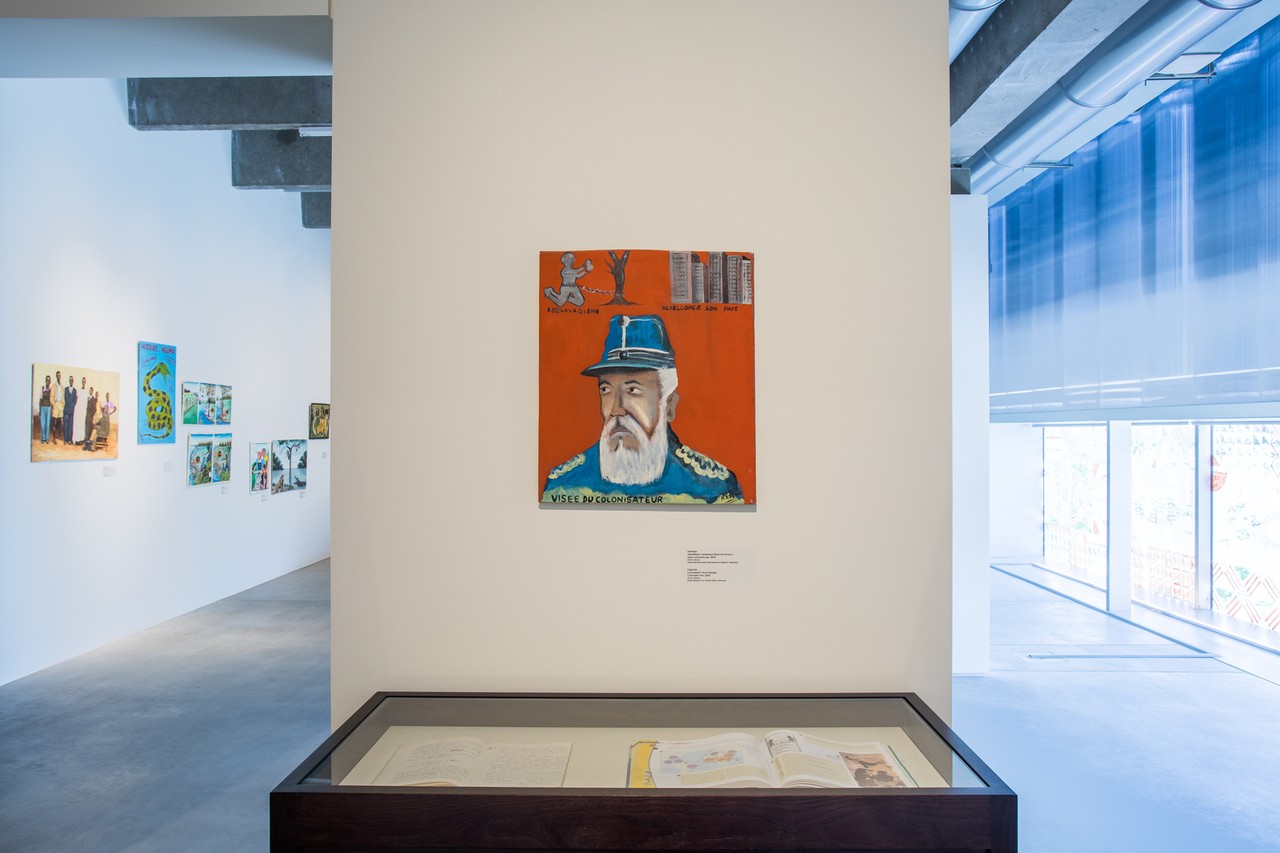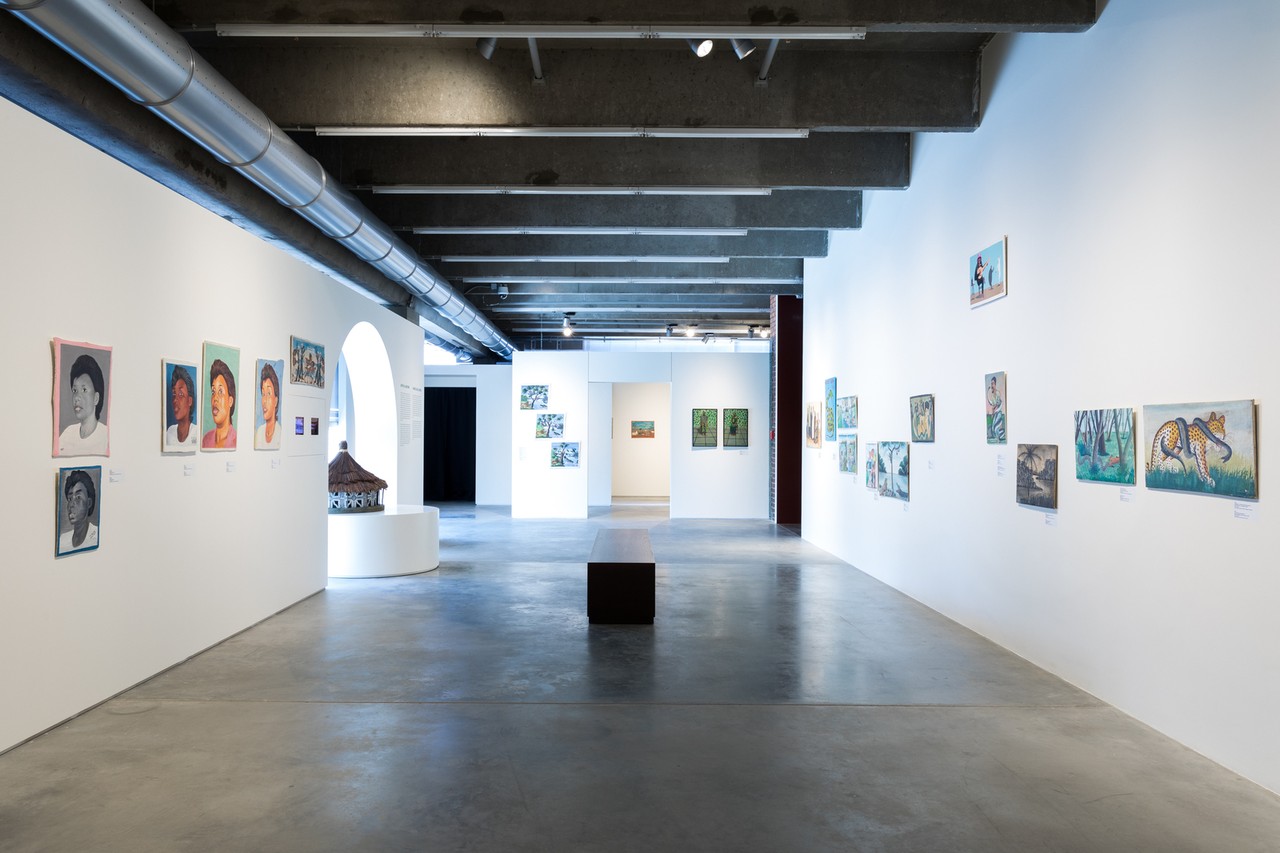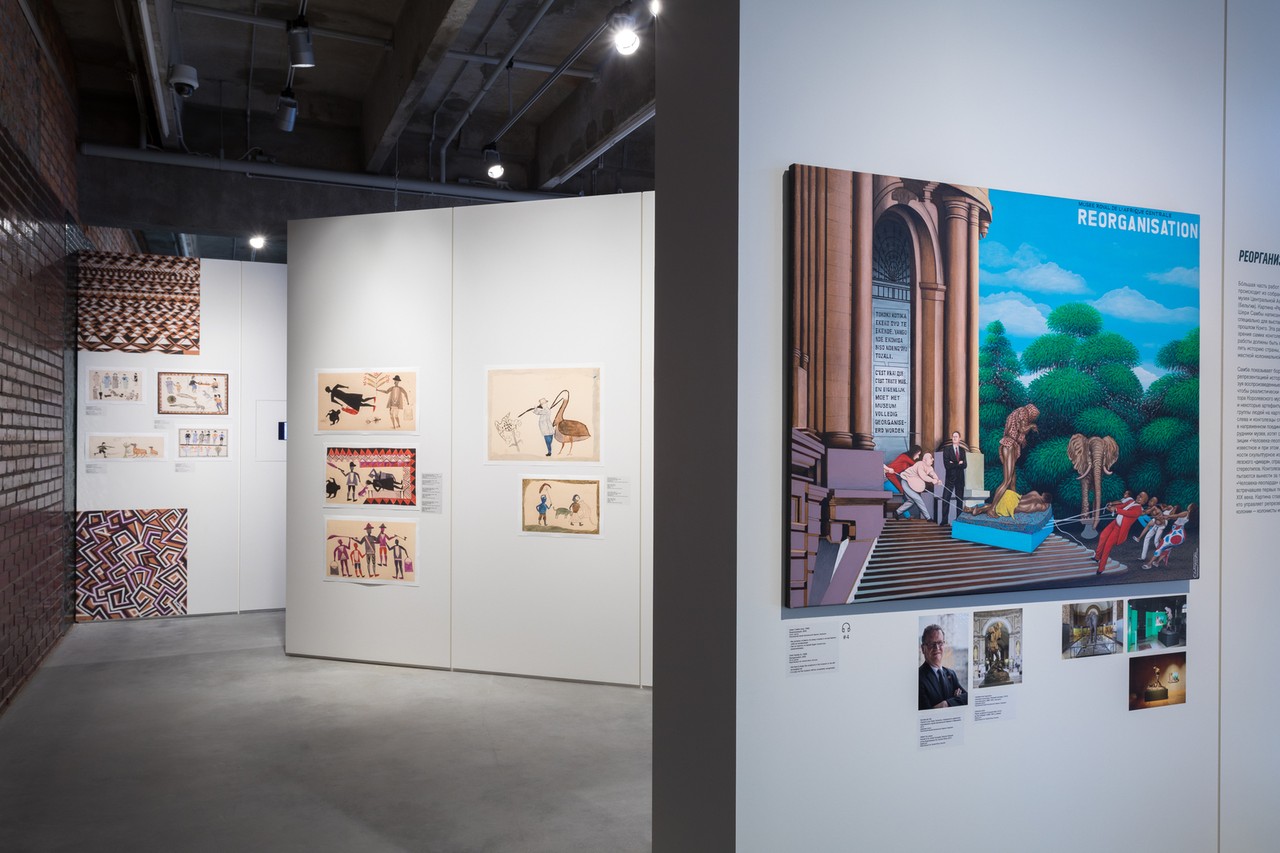Congo Art Works: Popular Painting
20 May - 13 Aug 2017

Tshibumba Kanda Matulu (Burozi). Speech of Lumumba, MNC. Lubumbashi, Haut-Katanga, DRC, 1998. Oil on canvas. RMCA Collection, Tervuren.
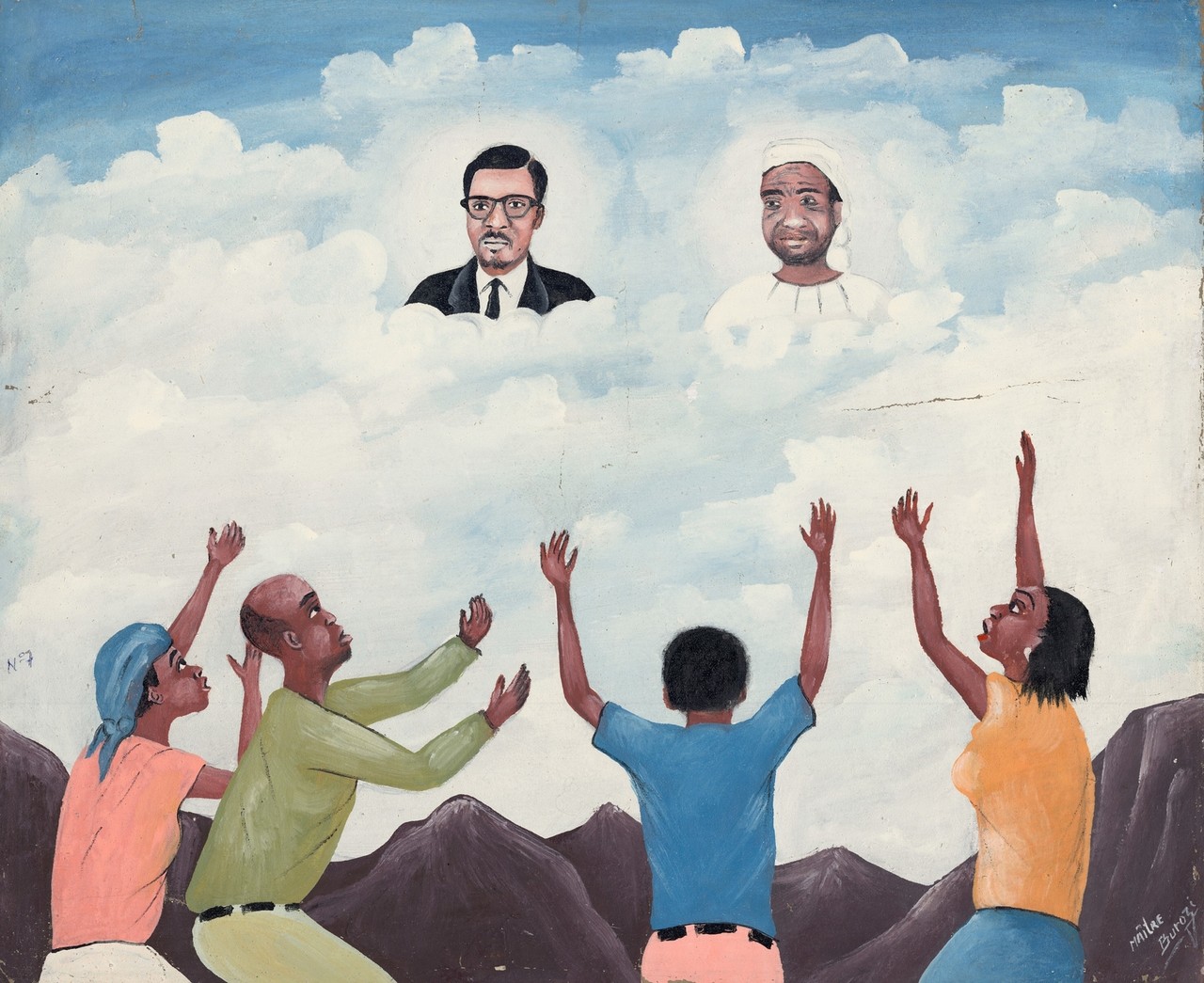
Burozi. Lumumba and Kimbangu in the clouds. Lubumbashi, Haut-Katanga, DRC, 1997. Oil on canvas. RMCA Collection, Tervuren.
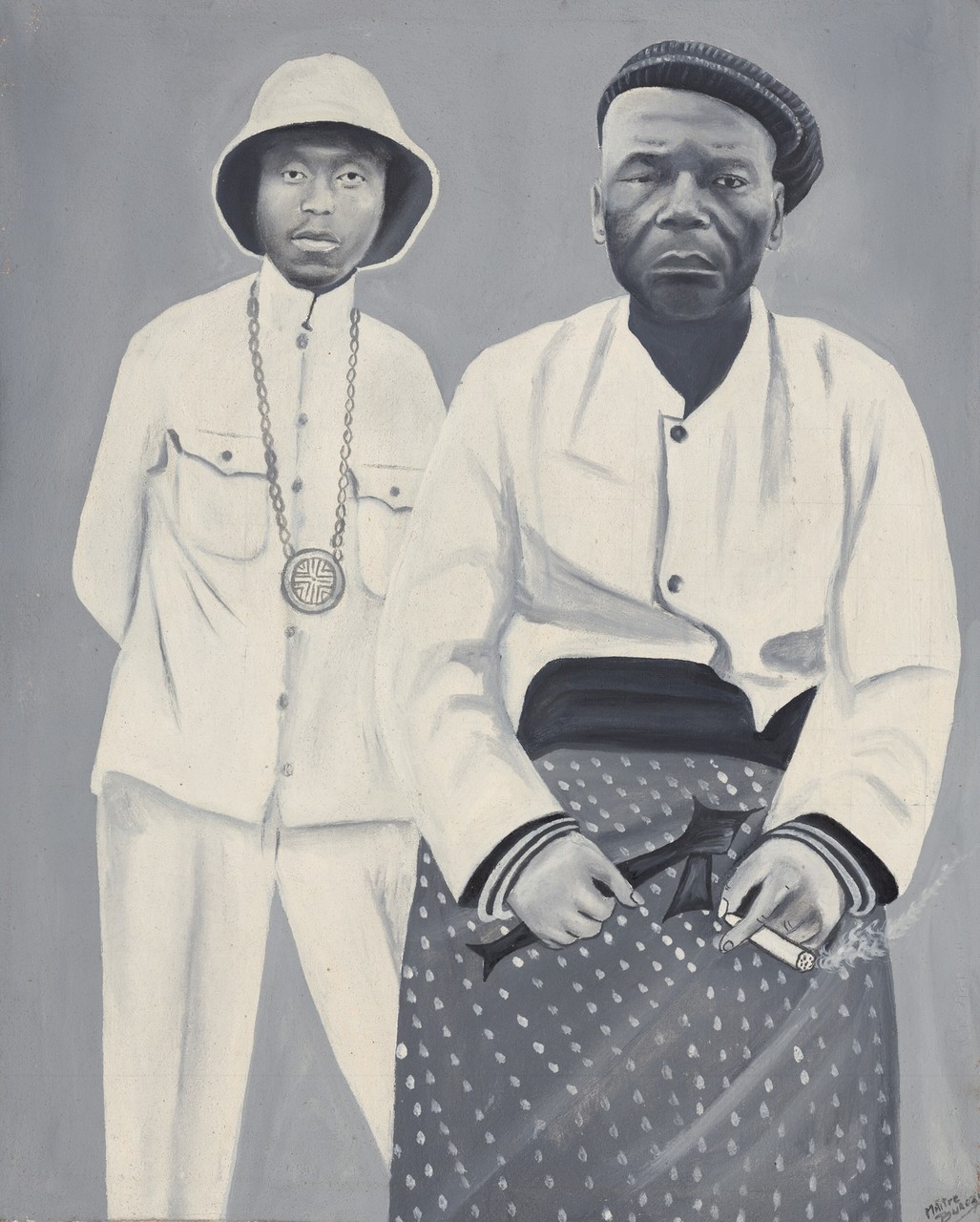
Burozi. Chief Lumpungu and his father Lumpungu Kaumbu Ka Ngoie. Lubumbashi, Haut-Katanga, DRC, 1997. Oil on canvas. RMCA Collection, Tervuren.
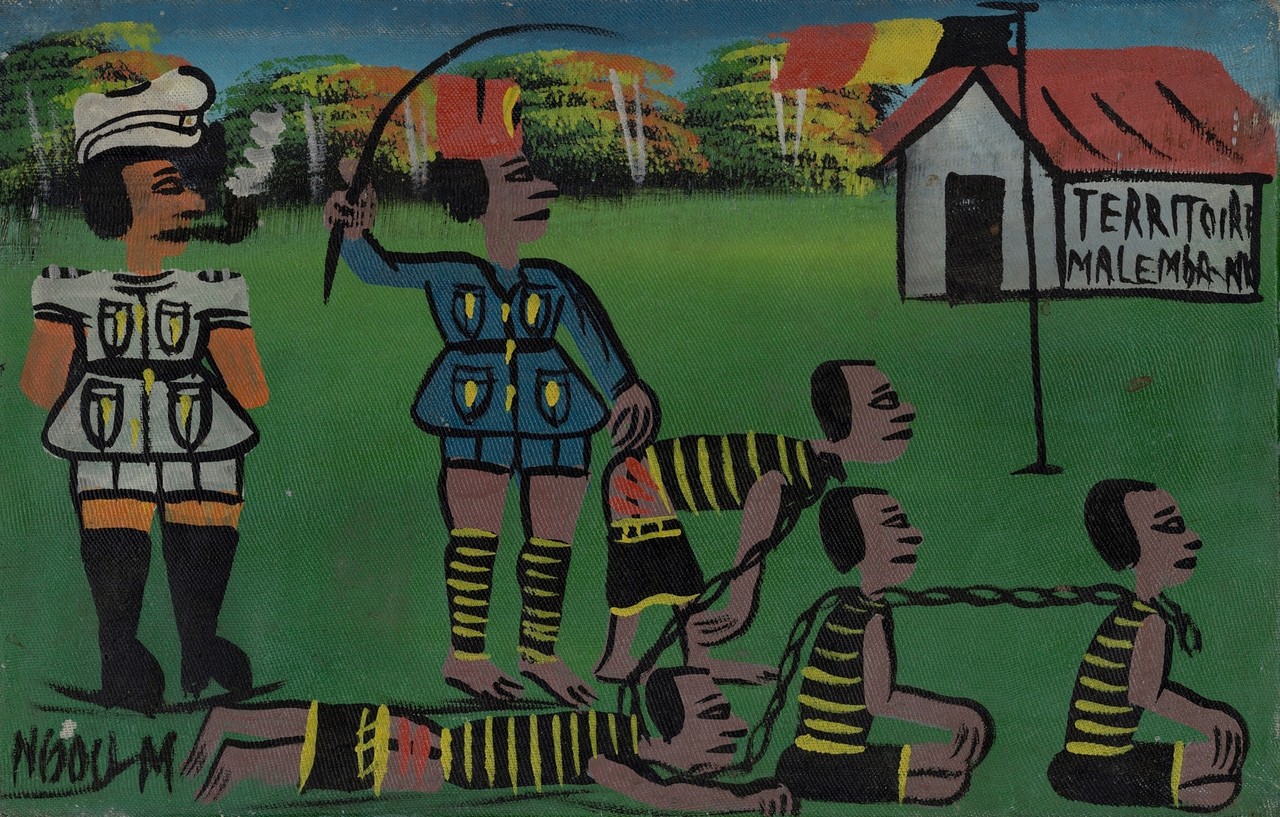
Ngoy Mulume. Belgian colony. Lubumbashi, Haut-Katanga, DRC, undated. Oil on canvas. RMCA Collection, Tervuren.
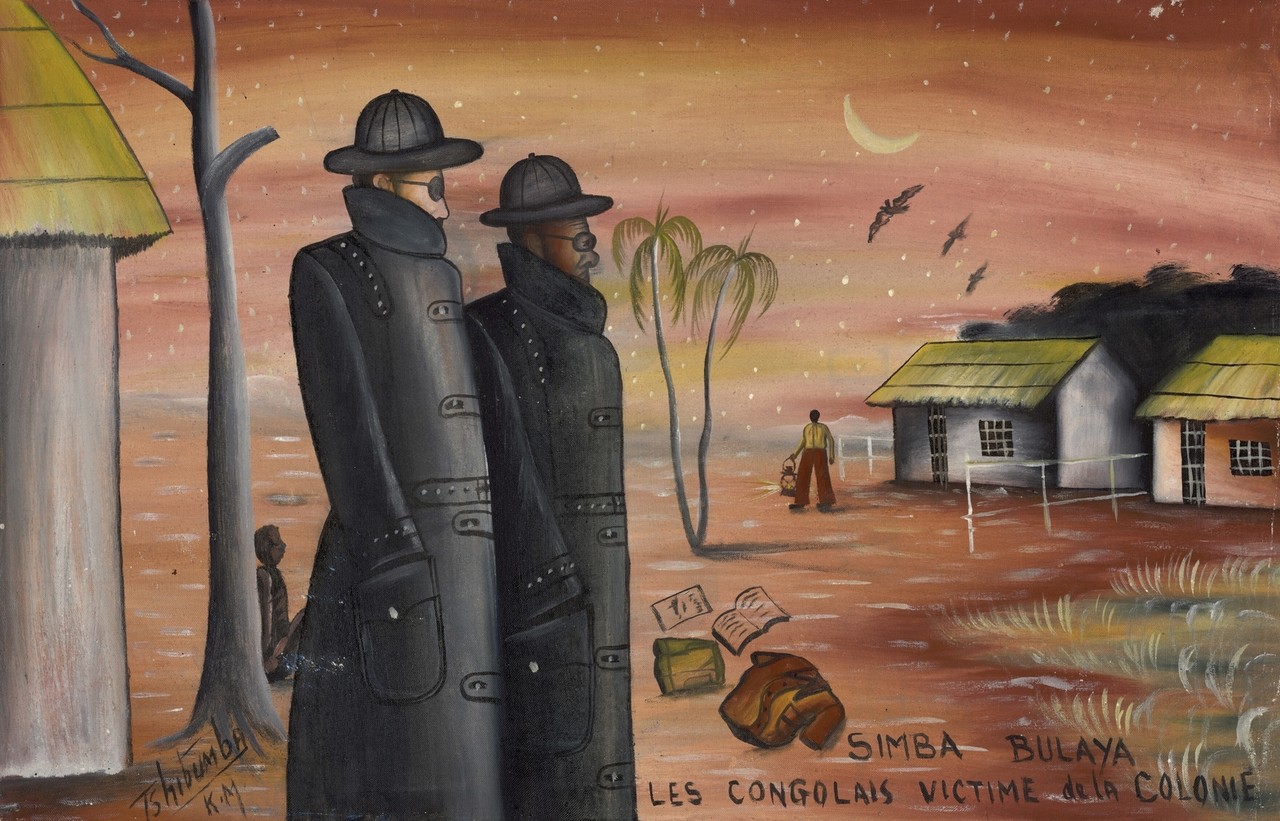
Tshibumba Kanda Matulu (1947-last seen 1982). Simba Bulaya (lions of Europe). Lubumbashi, Haut-Katanga, DRC, 1973. Oil on canvas. RMCA Collection, Tervuren. Шибумба Канда Матулу. (1947 – 1982).
CONGO ART WORKS: POPULAR PAINTING
20 May - 13 August 2017
In summer 2017, Garage Museum of Contemporary Art presents Congo Art Works: Popular Painting, a survey of Congolese art over the last fifty years, developed by the Royal Museum for Central Africa (RMCA), Tervuren in collaboration with BOZAR, Brussels.
Six years after showing Carsten Holler and Jean Pigozzi’s acclaimed overview of art from two important and wildly different cultures—JapanCongo—Garage revisits the Democratic Republic of Congo, a former Belgian colony that has become a hotbed of contemporary artistic production. This time, the angle is quite different: paintings by prominent Congolese artists are presented not as exotic objects, but as depictions of everyday reality which aim to make sense of the country’s present and its history. Congo Art Works: Popular Painting draws from the collection of the Royal Museum for Central Africa (RMCA) and tells the story of art in the Mobutu Sese Seko era and beyond. The exhibition is curated by Bambi Ceuppens of RMCA and Congolese artist Sammy Baloji, who places his compatriots’ works within a dense net of colonial memories, personal documents, and hard facts. Congo Art Works: Popular Painting is, in many ways, a continuation of Baloji’s investigation of the history of his home country that has developed through research, installations, and curatorial projects since 2006.
The phenomenon of popular painting emerged in the aftermath of Congo’s independence from Belgian rule, in 1960. Initially generating little interest outside the country, it gained international recognition in the early 2000s. The exhibition opens with a selection of film posters, books, and photography from the colonial period that seeks to challenge the established way of looking at African peoples as “underdeveloped” or “uncivilized,” and therefore excluded from Western modernity or progress. TPrivate art schools established in Congo in the colonial period as part of an institutional outreach program that aimed to present Belgium as a benevolent ruler bringing progress have tried to exoticise local artists by training them to follow the traditional forms of expression.
The popular painting works in the exhibition were originally collected by Bogumil Jewsiewicki, a Polish anthropologist who started buying in the 1970s, while working in Congo. He did not see his activities as amassing an art collection, but as gathering an archive that preserves the history of painting and the social process surrounding its creation and dissemination. Initially, Jewsiewicki regarded the painters as naive artists, similar to those labeled “outsider artists” in the West, but over time came to regard them as purveyors of a highly-organized and self-conscious mass culture. Popular painting is ingrained in the everyday life of the people of Democratic Republic of Congo: showing local heroes, reminding the viewer of recent colonial history, and offering satire and humorous fables about the human condition, all rendered in a colorful, conversational style that speaks to society directly, without any institutional go-betweens. The paintings are exhibited alongside historical objects from the RMCA collection in order to demonstrate that what we call colonial, traditional, ethnographic, modern, or contemporary all belongs to the same history of art, with popular painting being part of a continuum of image making that precedes the colonization of Congo.
Congo Art Works: Popular Painting also includes two archival projects that underline contemporary uses of traditional Congolese art and its instrumentalization. Sammy Baloji addresses these questions with a conceptual intervention in the exhibition space. Based on the painted facade of a traditional courthouse made by the Mangbetu people—whose forms were highly appreciated by late-nineteenth-century colonists—Baloji’s work addresses questions of authenticity and the exoticization of Africans, as practiced by the Belgian colonial administration. A selection of advertisements, developed by artist Djo Bolankoko and based on the RMCA archives, demonstrates how popular painting as a practice is deeply inscribed in the urban fabric of Kinshasa.
In order to connect the exhibition and its exploration of colonialism and the post-colonial condition to the Russian context, Garage has developed a show within a show, which examines the art of Chukotka, a region in the Far East of the country that became part of the Soviet Union in 1920. With this investigation of a markedly different type of interaction between the metropolis and the margins, Garage seeks to address an important, but rarely examined topic.
Congo Art Works: Popular Painting is the third in a series of exhibitions at Garage that explores the significance of collecting in relation to the broader activities of a contemporary museum, particularly through identifying the diversity of processes in which collectors and institutions engage. Developed alongside Garage Archive Collection and intended to instigate public debate, the exhibition series asks: if a museum is a repository of a wide variety of knowledge and experience, what are the relevant approaches to building and presenting a collection? Past exhibitions in the series include Personal Choice (2014), a selection of work from Russian private collections of contemporary art, and Grammar of Freedom (2015), a survey of eastern European art from the ArtEast 2000+ collection at Moderna galerija, Ljubljana, Slovenia.
Congo Art Works: Popular Painting is curated by Bambi Ceuppens and Sammy Baloji. The exhibition at Garage is organized by curator Valentin Diaconov and assistant curator Iaroslav Volovod.
20 May - 13 August 2017
In summer 2017, Garage Museum of Contemporary Art presents Congo Art Works: Popular Painting, a survey of Congolese art over the last fifty years, developed by the Royal Museum for Central Africa (RMCA), Tervuren in collaboration with BOZAR, Brussels.
Six years after showing Carsten Holler and Jean Pigozzi’s acclaimed overview of art from two important and wildly different cultures—JapanCongo—Garage revisits the Democratic Republic of Congo, a former Belgian colony that has become a hotbed of contemporary artistic production. This time, the angle is quite different: paintings by prominent Congolese artists are presented not as exotic objects, but as depictions of everyday reality which aim to make sense of the country’s present and its history. Congo Art Works: Popular Painting draws from the collection of the Royal Museum for Central Africa (RMCA) and tells the story of art in the Mobutu Sese Seko era and beyond. The exhibition is curated by Bambi Ceuppens of RMCA and Congolese artist Sammy Baloji, who places his compatriots’ works within a dense net of colonial memories, personal documents, and hard facts. Congo Art Works: Popular Painting is, in many ways, a continuation of Baloji’s investigation of the history of his home country that has developed through research, installations, and curatorial projects since 2006.
The phenomenon of popular painting emerged in the aftermath of Congo’s independence from Belgian rule, in 1960. Initially generating little interest outside the country, it gained international recognition in the early 2000s. The exhibition opens with a selection of film posters, books, and photography from the colonial period that seeks to challenge the established way of looking at African peoples as “underdeveloped” or “uncivilized,” and therefore excluded from Western modernity or progress. TPrivate art schools established in Congo in the colonial period as part of an institutional outreach program that aimed to present Belgium as a benevolent ruler bringing progress have tried to exoticise local artists by training them to follow the traditional forms of expression.
The popular painting works in the exhibition were originally collected by Bogumil Jewsiewicki, a Polish anthropologist who started buying in the 1970s, while working in Congo. He did not see his activities as amassing an art collection, but as gathering an archive that preserves the history of painting and the social process surrounding its creation and dissemination. Initially, Jewsiewicki regarded the painters as naive artists, similar to those labeled “outsider artists” in the West, but over time came to regard them as purveyors of a highly-organized and self-conscious mass culture. Popular painting is ingrained in the everyday life of the people of Democratic Republic of Congo: showing local heroes, reminding the viewer of recent colonial history, and offering satire and humorous fables about the human condition, all rendered in a colorful, conversational style that speaks to society directly, without any institutional go-betweens. The paintings are exhibited alongside historical objects from the RMCA collection in order to demonstrate that what we call colonial, traditional, ethnographic, modern, or contemporary all belongs to the same history of art, with popular painting being part of a continuum of image making that precedes the colonization of Congo.
Congo Art Works: Popular Painting also includes two archival projects that underline contemporary uses of traditional Congolese art and its instrumentalization. Sammy Baloji addresses these questions with a conceptual intervention in the exhibition space. Based on the painted facade of a traditional courthouse made by the Mangbetu people—whose forms were highly appreciated by late-nineteenth-century colonists—Baloji’s work addresses questions of authenticity and the exoticization of Africans, as practiced by the Belgian colonial administration. A selection of advertisements, developed by artist Djo Bolankoko and based on the RMCA archives, demonstrates how popular painting as a practice is deeply inscribed in the urban fabric of Kinshasa.
In order to connect the exhibition and its exploration of colonialism and the post-colonial condition to the Russian context, Garage has developed a show within a show, which examines the art of Chukotka, a region in the Far East of the country that became part of the Soviet Union in 1920. With this investigation of a markedly different type of interaction between the metropolis and the margins, Garage seeks to address an important, but rarely examined topic.
Congo Art Works: Popular Painting is the third in a series of exhibitions at Garage that explores the significance of collecting in relation to the broader activities of a contemporary museum, particularly through identifying the diversity of processes in which collectors and institutions engage. Developed alongside Garage Archive Collection and intended to instigate public debate, the exhibition series asks: if a museum is a repository of a wide variety of knowledge and experience, what are the relevant approaches to building and presenting a collection? Past exhibitions in the series include Personal Choice (2014), a selection of work from Russian private collections of contemporary art, and Grammar of Freedom (2015), a survey of eastern European art from the ArtEast 2000+ collection at Moderna galerija, Ljubljana, Slovenia.
Congo Art Works: Popular Painting is curated by Bambi Ceuppens and Sammy Baloji. The exhibition at Garage is organized by curator Valentin Diaconov and assistant curator Iaroslav Volovod.

